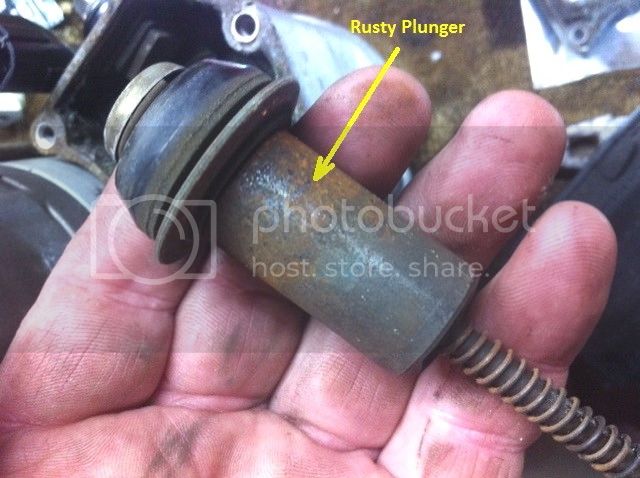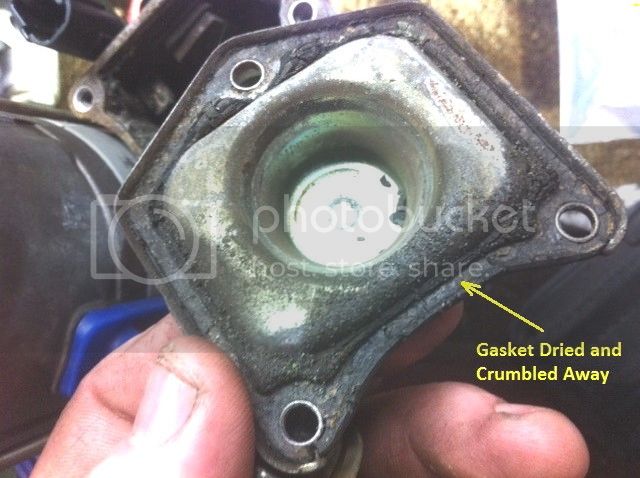I have been experiencing intermittent symptoms of what seemed like either a battery issue or starter contact wear on my 2000 LX470. I have owned it for about a year with 146,000 mi. and the PO did not have much for service records, but with that many miles I would have guessed the starter contacts would have been replaced. Today the first two times it started were very sluggishly. The third time it hesitated and then the starter went on and would not stop even with the ignition in the 'off' position and the key removed. The engine never tried to fire while it was continuously cranking over. I ended up having to disconnect the battery terminal to get the starter to stop. I tried reconnecting the battery a bit later and the starter was still stuck on. I ended up having to get it towed back to the house. I have replace starter contacts on my 100's before after they had intermittent starting issues, so am pretty familiar with that job. I am curious if anyone else has experienced a similar issue with the starter stuck on and whether the issue involved replacing anything other than starter contacts and the plunger.
Navigation
Install the app
How to install the app on iOS
Follow along with the video below to see how to install our site as a web app on your home screen.
Note: This feature may not be available in some browsers.
More options
Style variation
You are using an out of date browser. It may not display this or other websites correctly.
You should upgrade or use an alternative browser.
You should upgrade or use an alternative browser.
This site may earn a commission from merchant affiliate
links, including eBay, Amazon, Skimlinks, and others.
More options
Who Replied?Are you in the rust belt? Wonder if corrosion in solenoid could be a cause.
Plunger in your solenoid is likely corroded (and stuck).
It was a Texas truck all its life, not a spec of rust, so I would be really surprised if corrosion in the plunger was the problem. But should have it apart in a couple hours.
Prepare to be "really surprised". Both of my trucks have been in Texas trucks all of their lives and both have had corroded solenoid parts in the past. Just the normal heat/cool cycles they go though will form condensation. I imagine you will find the seal for the solenoid end cap has dried up and is coming apart as well.
Edit to add photos:
From my 'Texas' Truck



Last edited:
- Thread starter
- #6
There was no corrosion like that on the plunger when I took it apart. The larger contact was worn down substantially. The plunger was not stuck to the contact when disassembled, but it had a fairly large bright patch with a mating one on the plunger contact. I suspect these matching bright patches are where the parts may have been temporarily welded together from arcing across the gap. The aggravating thing about the ordeal is that in the whole greater Houston area, the Toyota and Lexus dealer parts departments could not come up with a plunger and said it would take at least a week or two to get one in. I ended up having to settle for buying a complete Toyota re-manufactured starter which was more readily available, but substantially more expensive. Word to the wise is that, if you think your contacts are going out, order up replacement parts far in advance of the job. I had bought these same parts from the local dealer several times in the past without issue, but I guess as these vehicles get older the dealers may start keeping fewer parts for them in inventory, or maybe they just want to sell more complete starters. This is one of the failure modes though that could leave one stranded in a remote location. A good wack on the starter with a hammer may have been able to separate the plunger from contacts, but with the location of the starter, I am not sure whether this could be readily accomplished.
Miles has zero to do with starter "wear". It is the number of starts.
Miles has zero to do with starter "wear". It is the number of starts.
^^^^^^ Correct, but 'mileage' is the accepted (handy) figure that is meant to correspond with 'averages'.
Similarly....'mileage' can not account for engine RUN time (time spent idling, no forward movement), it also does not reflect usage, which could range from mild to severe.
There was no corrosion like that on the plunger when I took it apart. The larger contact was worn down substantially. The plunger was not stuck to the contact when disassembled, but it had a fairly large bright patch with a mating one on the plunger contact. I suspect these matching bright patches are where the parts may have been temporarily welded together from arcing across the gap. The aggravating thing about the ordeal is that in the whole greater Houston area, the Toyota and Lexus dealer parts departments could not come up with a plunger and said it would take at least a week or two to get one in. I ended up having to settle for buying a complete Toyota re-manufactured starter which was more readily available, but substantially more expensive. Word to the wise is that, if you think your contacts are going out, order up replacement parts far in advance of the job. I had bought these same parts from the local dealer several times in the past without issue, but I guess as these vehicles get older the dealers may start keeping fewer parts for them in inventory, or maybe they just want to sell more complete starters. This is one of the failure modes though that could leave one stranded in a remote location. A good wack on the starter with a hammer may have been able to separate the plunger from contacts, but with the location of the starter, I am not sure whether this could be readily accomplished.
These days the DIYer can order a complete solenoid repair kit (online) and have it in 2-3 days. For those unable to wait, purchase a Denso 're-man', but keep your old starter and repair it. It is not difficult to do and having a 'spare' starter is worth more than the paltry core credit you would receive for turning it in.
It's the location of the starter (under the intake manifold in the 'V' of the engine block at the back) that makes it such a 'fun' project.
^^^^^^ Correct, but 'mileage' is the accepted (handy) figure that is meant to correspond with 'averages'.
Similarly....'mileage' can not account for engine RUN time (time spent idling, no forward movement), it also does not reflect usage, which could range from mild to severe.
Good point.
Similar threads
Users who are viewing this thread
Total: 1 (members: 0, guests: 1)
